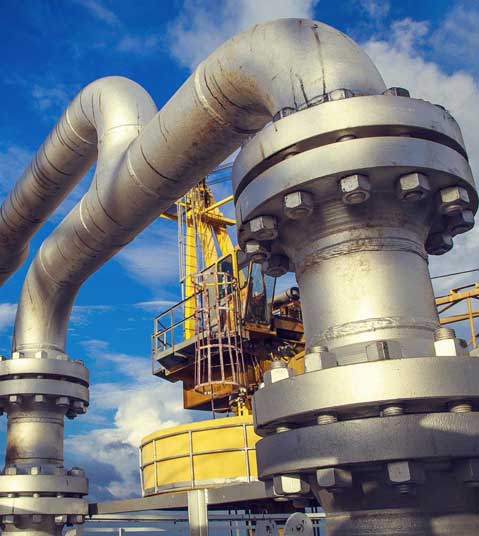Oil Exploration & Production
Low-carbon oil production through EOR using lowest cost anthropogenic CO2
Crude oil is the most common source of energy in the world, with over 30% share of the total primary energy supply by fuel (source: IEA). Crude oil and other fossil fuels (coal & natural gas) form the bedrock of modern energy systems and will continue to play a central role in the energy systems of the foreseeable future. In fact, crude oil demand is expected to peak only by 2040, driven by the demand from emerging developing economies like China and India.
Crude oil is seen as the major contributors to climate change; however, it is important to understand that the real issue is CO2 & its capture, and not crude oil. Given the difficulty and slow pace of energy transitions, upstream companies are increasingly looking at ways & means to transition to the production of crude oil with a low or near zero CO2 footprint, or low-carbon oil, while also optimizing investments, costs and sustainability.
Solutions
We are assisting our clients in charting economically viable energy transition pathways for realizing the goal of low-carbon crude oil production. In this regard, we offer integrated CO2 EOR based solutions that lead to carbon abatement and result in higher crude production and recovery from existing mature fields and reduction of capital expenditure and risks associated with new oil fields. Our integrated system and business-driven approach covers the entire lifecycle of CO2 – starting from CO2 source determination, CO2 capture, processing & transportation, and also covers injection of CO2 for EOR and subsequent recycling of CO2. Our solutions are based on:
-
Determination of the lowest cost industrial source of CO2:
We assist our clients to determine the most cost-effective way of sourcing dense stream anthropogenic CO2, which can be cost-effectively captured, treated and transported for utilization in EOR. We bring a systems approach based on critical analysis of the EOR requirements (aimed production levels & reservoir characteristics) and the CO2 stream characteristics from various potential industrial sources: viz. coal/petcoke gasification, refinery, etc. with the appropriate gas conditioning, processing & carbon capture technology. Such a systems approach enables the production of EOR-grade dense CO2 streams at the lowest possible cost points (<US$ 10/tonne).
-
CO2 EOR as a carbon tax risk hedge and competitive advantage:
We help clients optimize the advantages of CO2 EOR, i.e. sustainability and low-carbon/net-negative oil production. The carbon credits from the permanent sequestration of CO2 in EOR can be used to earn tax credits or be swapped with the carbon emissions associated with downstream products, thus creating a dynamic competitive advantage that can be tailored based on the market dynamics, business strategy and relative cost economics of various products.
-
Mature oil field management:
Our integrated reservoir modelling approach is used to analyze and identify the gaps in oil recovery practices from specific fields vis-à-vis global peers. This forms an input for developing customized solutions with cost estimates and timelines for maximizing production in an environmentally sustainable manner.
Industry Solutions
-
Oil Exploration & Production -
Refineries -
Chemicals & Petrochemicals -
Iron & Steel -
Clean Power -
Government & Institutions
Case Studies

UAE Oil & Gas major:
We have conceptualized the world’s first hyper-scale CO2 EOR project for an oil & gas major in UAE. The design will enable the client to access low cost, dense stream and large scale CO2 (about 11 mtpa), sourced via the petcoke & coal gasification route, for EOR at the client’s maturing oil fields. The project will enable sourcing CO2 at 10-15 US$/t (cash cost) for the production of 0.075 million bpd of CO2-EOR oil, with a 60% lower CO2 footprint compared to conventional oil and the cost-effective production of clean power, hydrogen and clean petrochemicals.
1 of 1
